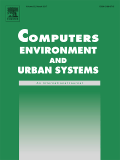Citation:

Abstract:
An agent based model for assessing the welfare impacts of urban disasters is presented. This couples a population allocation algorithm with a simulation platform. The fully articulated model fuses both bottom-up (locational choice for workplace, residence and daily activities) and top-down (land use and housing price) protocols. This study moves beyond current research by addressing economic welfare consequences of urban disasters. The resilience capabilities of different income groups are identified. This is illustrated for the Jerusalem central business district. Empirical results at the micro-scale suggest that physical destruction leads to a zero-sum game within the housing market in which wealthier residents hold an advantage over the poor. This results in the transformation of neighborhoods and displacement of poor and vulnerable populations. Low income groups lose both physical ground and the social support systems that go with location. Policy implications of these findings are discussed.

